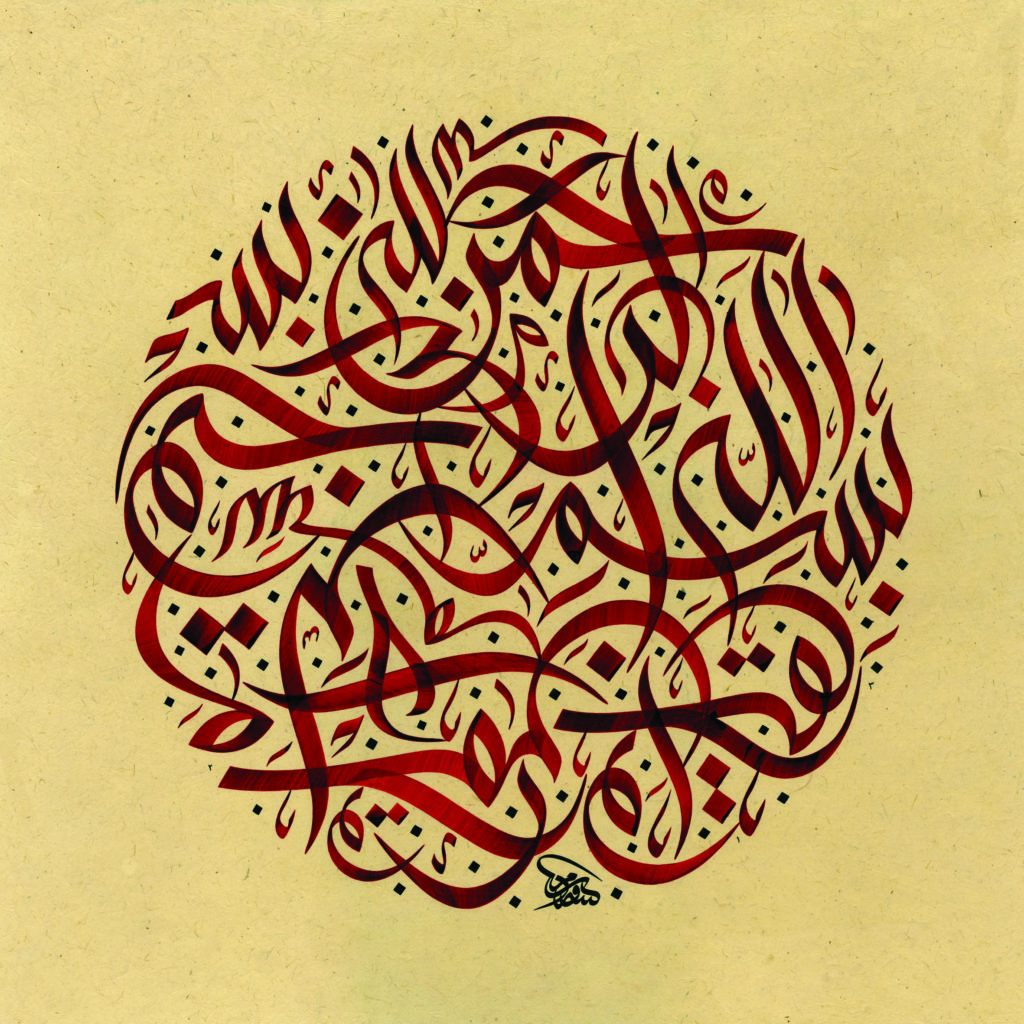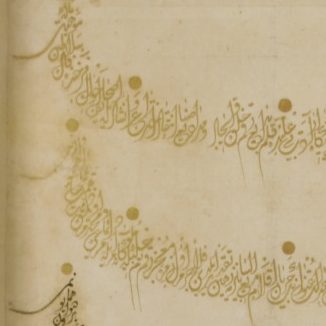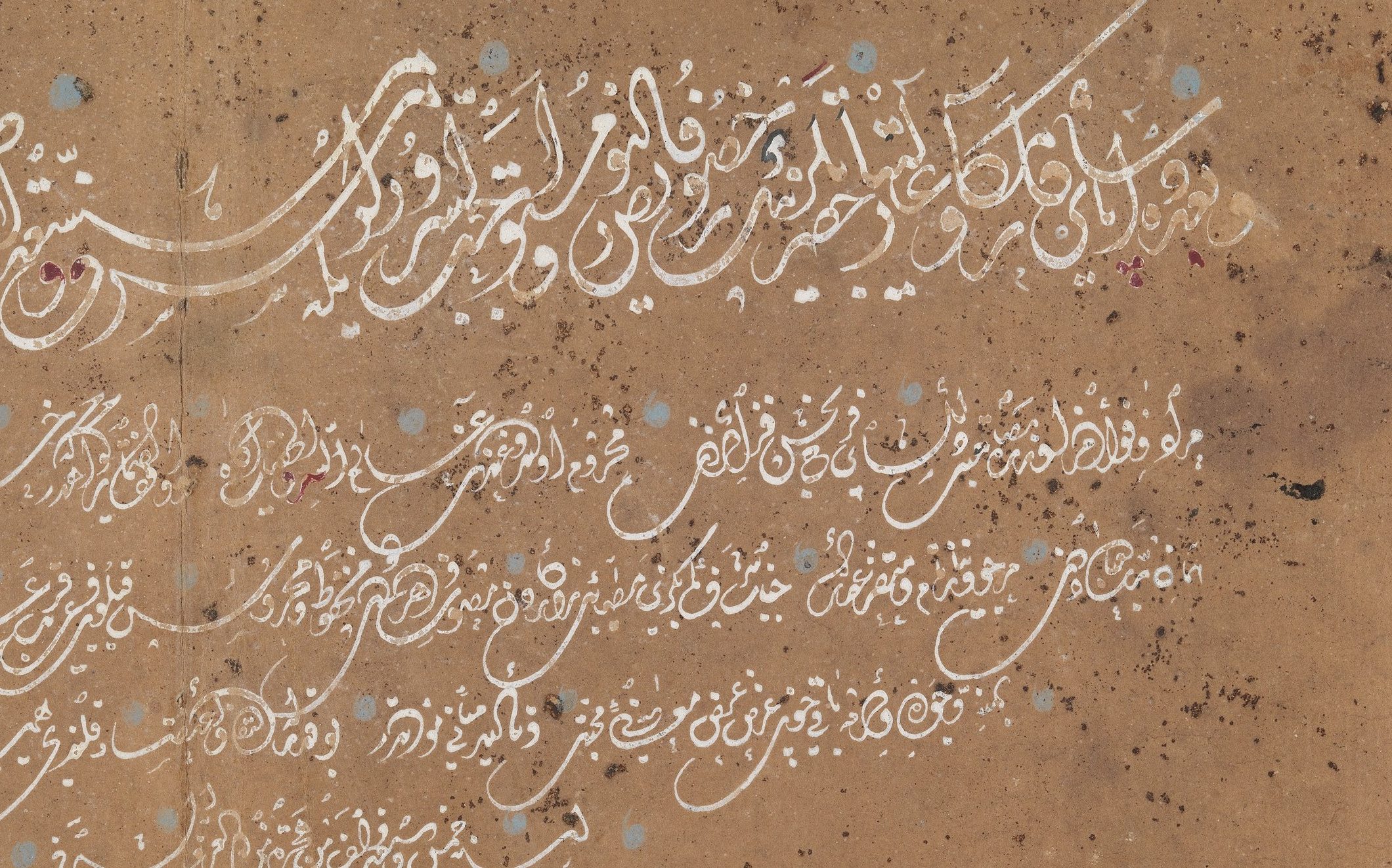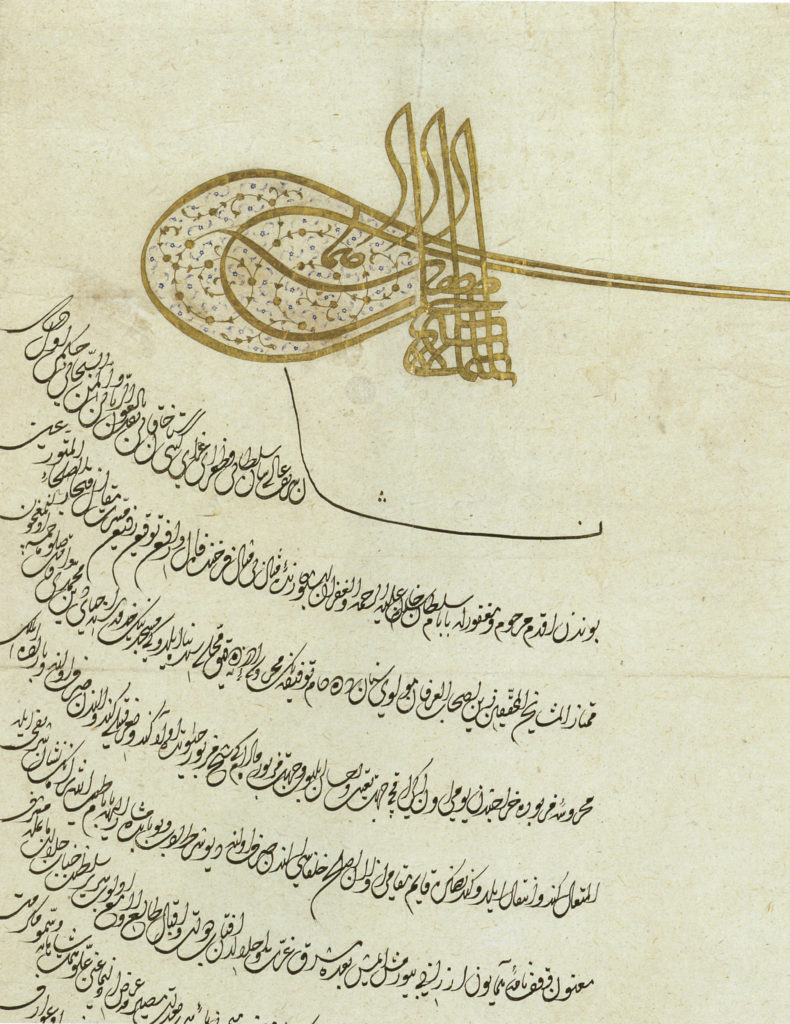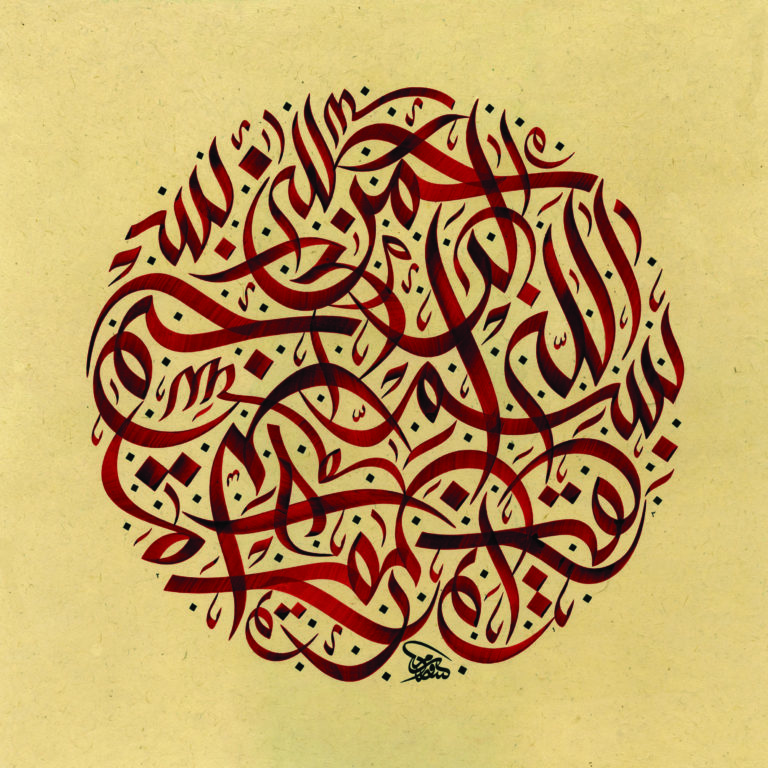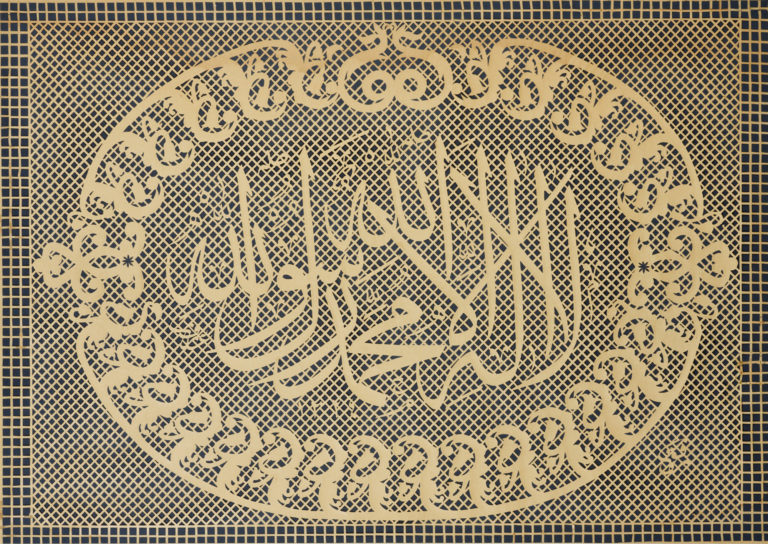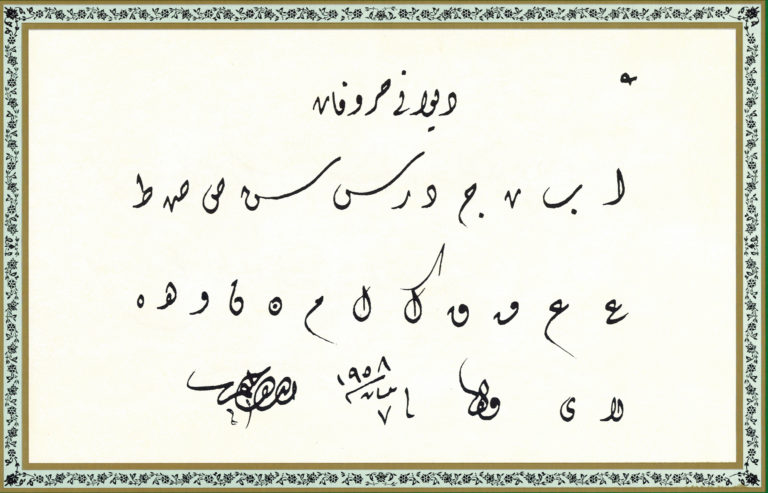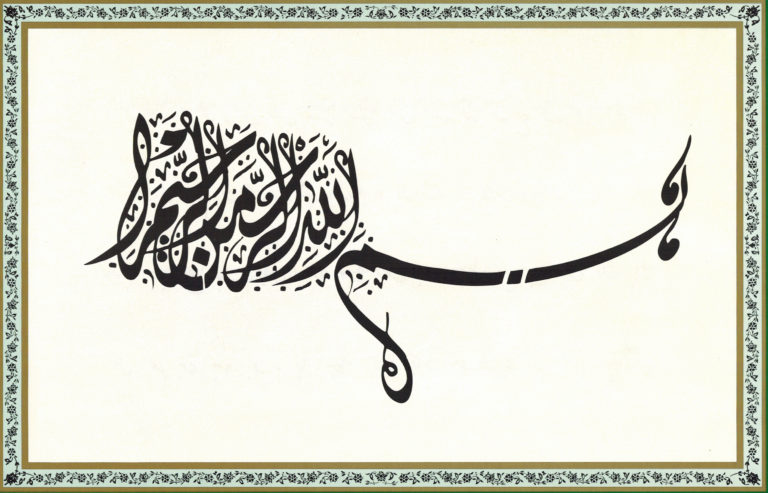Divani
(pronounced “Dee-wa-nee”)
Meaning
- “Divani” is derived from the word “divan,” the name for the Ottoman royal chancery
Uses
- Used in the Ottoman court to write official documents, including proclamation scrolls, edicts, land and title grants, appointments, correspondence, endowments, etc.
Timeline
- Developed in the 16th century
- Reached its artistic peak in the 19th century
- Still in use today
Distinctive characteristics
- Wide spaces appear between lines
- Lines ascend upward as they move from right to left
- When written in large (djali or jali) form, the empty spaces in the script are filled with small dots in a veil of decorative detail
- Letters and words that don’t connect on the left are often connected in this script (unauthorized ligatures)
Notes
- Divani is difficult to read and write in its large (djali or jali) form because of its extreme stylization and the number of unauthorized connections. This made Divani an ideal script for court documents, because it insured confidentiality and protected them from forgery
